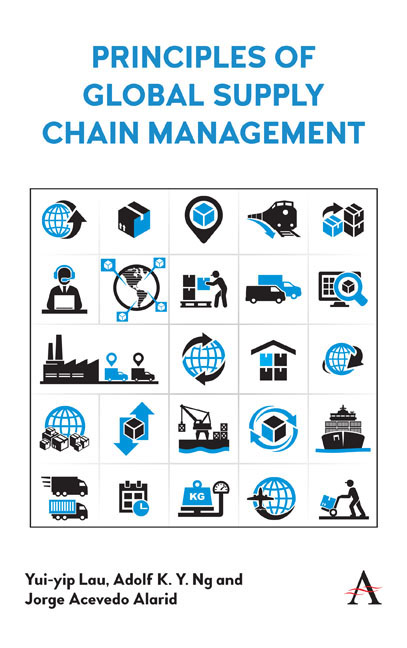Book contents
- Frontmatter
- Contents
- List of Figures
- List of Tables
- Foreword
- Preface
- About the Authors
- 1 Introduction
- 2 Managing Outbound Logistics and Distribution
- 3 Supplier Selection and Procurement
- 4 Warehouse Management
- 5 Case Studies in Food Supply Chains
- 6 Inland Ports in Global Supply Chains
- 7 Climate Change in a Global Environment
- 8 Sustainability in Infrastructure-Based Supply Chains
- 9 Reverse Logistics
- 10 Logistics Associations
- 11 Logistics Education
- 12 Case Exercises in Global Supply Chains
- Appendix
- Index
9 - Reverse Logistics
- Frontmatter
- Contents
- List of Figures
- List of Tables
- Foreword
- Preface
- About the Authors
- 1 Introduction
- 2 Managing Outbound Logistics and Distribution
- 3 Supplier Selection and Procurement
- 4 Warehouse Management
- 5 Case Studies in Food Supply Chains
- 6 Inland Ports in Global Supply Chains
- 7 Climate Change in a Global Environment
- 8 Sustainability in Infrastructure-Based Supply Chains
- 9 Reverse Logistics
- 10 Logistics Associations
- 11 Logistics Education
- 12 Case Exercises in Global Supply Chains
- Appendix
- Index
Summary
Reverse logistics is the process of moving goods from their typical final destination for the purpose of capturing value, or proper disposal. Remanufacturing and refurbishing activities may also be included in the definition of reverse logistics. In this chapter, we will achieve the following objectives:
• provide an overview of key issues of reverse logistics;
• discuss reverse logistics management;
• describe reverse logistics management activities; and
• illustrate typical examples in reverse logistics management.
Introduction
Only a few decades ago, the world spoke about “quality” as a concept to add value in products and services; then the “just in time” concept appeared some years after. At that time, engineers, administrators and logistics strategists focused on designing intelligent and reliable strategies that would boost the concept of “supply chain” and guarantee greater efficiency in the delivery of products and services on time. It was essential to do what was necessary to achieve such, the production lines did not stop for any reason and added to the previous concept of quality and the consumers satisfied their need, taste or desire as soon as possible.
Quality refers to the ability of an object to meet implicit or explicit needs according to a parameter, a fulfillment of quality requirements (Figure 9.1). It is a subjective concept related to the perceptions of each individual to compare the thing with any other of the same species, and various factors such as culture, product or service, needs and expectations directly influence this definition.
The term quality of Latin is “qualitative.” A current view of the concept of quality in marketing indicates that quality is not delivering to the customer what they want, but delivering what they had never imagined they were looking for and that once they get it, realize it is what they have always wanted.
There is also quality control, quality assurance and quality management concepts that are related to quality in industries and services.
- Type
- Chapter
- Information
- Principles of Global Supply Chain Management , pp. 129 - 148Publisher: Anthem PressPrint publication year: 2019

